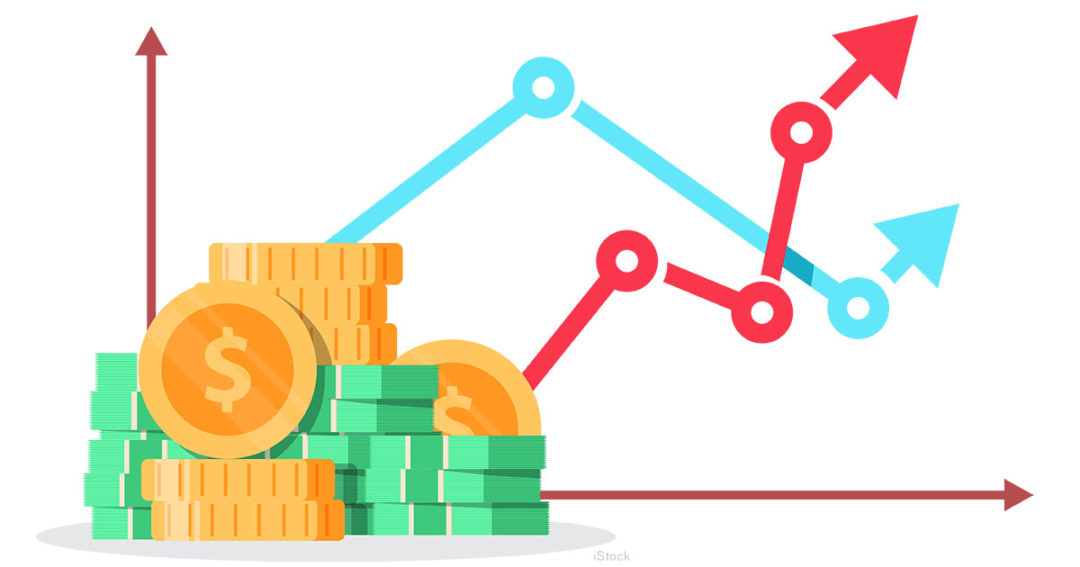
2022 lending forecast: A return to historic norms
Loan portfolio growth will vary widely among credit unions, says CUNA Chief Economist Mike Schenk.
Credit union loan portfolios are expected to return to historic growth rates in 2022 as CUNA economists predict a 9% increase in total loans outstanding.
That’s just above the historic average growth rate of 8%, and much higher than the expected 6% increase in 2021.
“We're expecting an acceleration in loan growth as the economy continues to open up,” says Mike Schenk, CUNA’s deputy chief advocacy officer for policy analysis and chief economist.
For perspective, credit unions navigated the initial economic uncertainty during the early days of the pandemic fairly well. Through the pandemic, credit unions assisted America’s small businesses by facilitating more than 200,000 Paycheck Protection Program (PPP) loans at an of average $47,000 per loan.
For some, those loans were a key driver behind healthy loan growth rates in 2020 and 2021.
“Another key driver was that the Federal Reserve began buying long-term securities, driving longer-term market interest rates to almost zero and causing a massive wave of first mortgage refinancing,” Schenk says.
First mortgages and business loans accounted for the lion’s share of total credit union loan growth in 2020. But not all credit unions have benefitted equally.
Strong first mortgage and business lending results tend to favor large credit unions because small credit unions are less likely to offer those products, Schenk says.
For example, about one-third of U.S. credit unions have $20 million or less in total assets, and roughly a quarter of those institutions offer first mortgages. Conversely, 93% of credit union with more than $20 million in assets 93% offer first mortgages.
Credit unions that don’t offer first mortgages don’t only risk missing out on robust growth, they may also lose other financing opportunities as members fold other loans into new, lower-rate mortgages originated by other lenders.
Credit union credit cards, new auto loans, and home equity loans/second mortgages all declined during 2020 and in the first half of 2021.

‘At a high, aggregate level, consumers and credit union members have never been in better shape.’
Mike Schenk
‘Moving parts’
First mortgages, which comprise 45% of total credit union loan portfolios, will again be a significant part of loan growth for many credit unions in 2022.
Schenk notes that mortgage portfolios have a lot of “moving parts” to consider.
“Number one is whether the origination volume will go up or down,” he says. “Number two, what will the payoff rates look like? Prepayment rates vary year-to-year depending largely on interest rates, economic circumstances, and demographic trends.
“Number three,” Schenk continues, “what percentage of mortgage originations will be kept on the books and how many will be sold? This is a big deal because recently about 40% of mortgages credit unions originated were ultimately sold into the secondary market.”
That percentage affects portfolio performance, he says. “Portfolio growth is a reflection not only of changes in demand by consumers but also changes in behavior within credit unions that can either make the loan growth look exceptionally strong or really weak.”
Schenk notes the Federal Reserve’s plan to taper the pace of its asset purchases will also affect refinancing. “That move will put upward pressure on long-term interest rates, so a lot of that refinancing activity will taper off in 2022.”
CUNA’s baseline forecast calls for first mortgage balances to grow 5% in 2022, down from about 9% in 2021 and more than 10% in 2020.
Beyond mortgages
CUNA expects 10% growth in home equity lines of credit/second mortgages in 2022, compared with a 4% decline in 2021. Both credit cards and unsecured loans are expected to increase 6% at credit unions in 2022 as consumers return to a semblance of normalcy.
New auto loans should grow 4%, reflecting IHS Markit’s forecast of a tepid 2.6% sales increase.
“Inflation and inventory demands will continue to create challenges for both lenders and consumers,” Schenk says.
CUNA economists predict 9% growth in used auto loans for 2022, with the relatively strong showing reflecting continuing supply chain disruptions.
Commercial loans should reflect solid gains as more obvious healing in communities across the nation nudge entrepreneurs to seek increasing opportunity. A robust 15% increase seems likely.
“PPP loans filled a void during the pandemic, and credit unions were key to that process,” Schenk says. “Pre-pandemic, commercial loans were growing pretty quickly. During the pandemic, businesses likely would have defaulted on their loans in record numbers. As the economy continues to open, commercial lending will expand again.”
Schenk says consumers retain a lot of pent-up demand, especially true for big-ticket purchases. He points to consumers’ solid financial standing as a reflection of that potential.
As consumers refinanced homes and squirreled away unemployment and stimulus payments during the pandemic, their debt payment burden fell to 8% of take-home pay, a record-low since Federal Reserve began tracking the number in 1980.
The stock market is near an all-time high, home prices have increased at double-digit rates, and debt has declined relative to disposable income. As a result, consumers’ net worth is at its highest level on record.
“At a high, aggregate level, consumers and credit union members have never been in better shape,” says Schenk.
